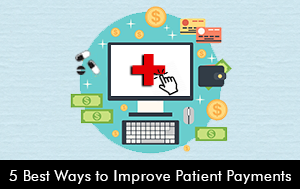In order for healthcare practices to do well in terms of profitability and growth, the staff needs to pay maximum attention to the Revenue Cycle Management (RCM) of the practice. It is really important for practices to receive proper charges for every patient visit, and that too in a timely manner.
This article by EMRSystems aims to discuss the best practices for fast collection of patient payments and boost the revenue collection rate. By following the tips presented below, you will be able to increase your patient revenues and improve your financial standing as a medical practice.
1. Use of IT in Payment Collection
Practices using Electronic Medical Records (EMR) Software for their daily tasks often use the integrated Medical Billing Services to generate and process patient payments. Such a tool allows you to send electronic billing statements to the patients’ accounts as soon as they leave the practice.
Medical Billing EMR Software also helps send polite reminders in case the patients miss their deadlines. Patients’ bank and card info can also be added for automatic payments. These automatic payments reduce friction in the billing process and also facilitate the patients since they do not have to take care of a lot of paperwork or paying their bills.
2. Improved Patient Communication
Latest studies show that almost 50% of the patients annually struggle with understanding their billing and are unable to break it down to smaller processes. This results in a lag in the payment since they are unable to trace down each cost to its cause.
You can take care of this issue by using the Patient Portal feature of your Electronic Health Records (EHR) Software. Patients can easily communicate with the staff as well as their physicians through the portal and clear all their doubts.
3. Staff Training on Discussing Payments with Patients
The staff of your clinic must be capable and trained-enough to approach patients about their payments with courtesy and professionalism. Patients are already loaded with so much stress and tension about their medical condition that they feel uncomfortable talking about their financial condition. In such cases, the staff should let them know that they understand the burden on them and provide them different payment options or plans.
4. Multiple Payment Options
For faster payments, you must accept payments from multiple options. This will save your patients from the hassle of shifting to another payment option in case you don’t accept payments from their preferred method.
5. Increased On-Site Payment Collection
Research has shown that practices which discuss payments with their patients face to face while they are still on-site have the best payment collection rate. You can have designated staff members at your practice who take care of all of this. But then again, this designated staff will need to be trained properly to discuss payments with courtesy and professionalism.







